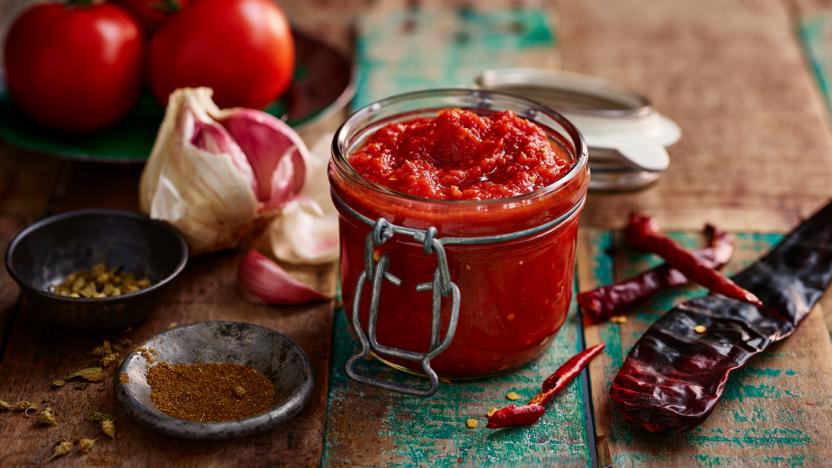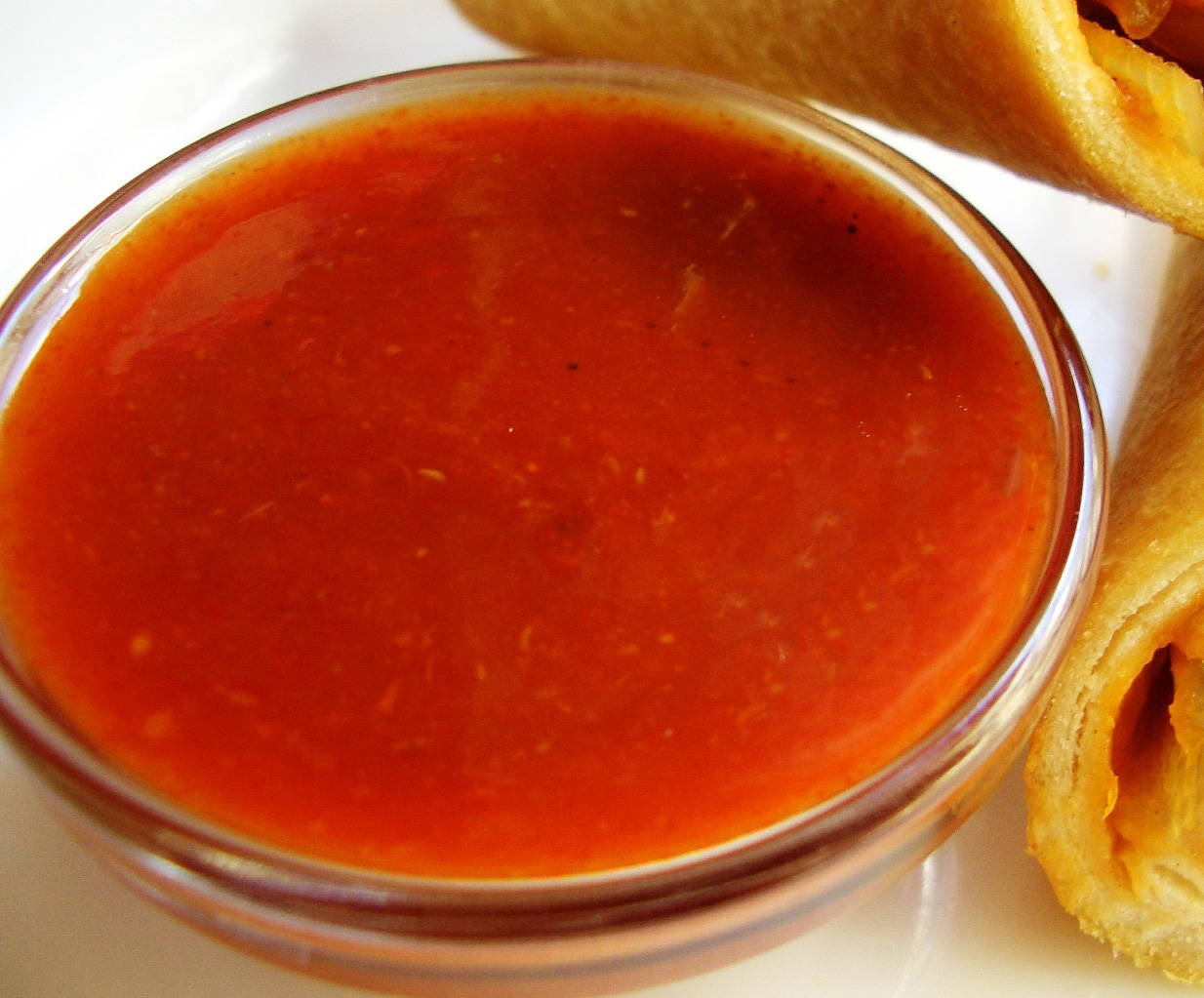Immerse yourself in the vibrant realm of flavors as we delve into the tantalizing world of hot chili sauce. This culinary masterpiece, a harmonious blend of heat and savor, has captivated taste buds across cultures and cuisines. Whether you’re a seasoned chili enthusiast or a curious culinary explorer, prepare to embark on a journey that will ignite your senses and elevate your culinary creations.
In this comprehensive guide, we’ll unveil the secrets of crafting the perfect hot chili sauce, from selecting the finest ingredients to mastering the art of preparation. With a step-by-step approach and expert insights, we’ll empower you to create a sauce that tantalizes your taste buds and leaves a lasting impression on your palate.
Introduction
Hot chili sauce has gained immense popularity as a culinary staple worldwide. Its versatility and ability to elevate the flavors of various dishes have made it a beloved condiment.
Typically crafted with a blend of chili peppers, vinegar, and spices, hot chili sauce offers a range of heat levels and flavor profiles, catering to diverse palates.
Common Ingredients
- Chili Peppers: The foundation of any hot chili sauce, they determine the heat intensity and flavor.
- Vinegar: Provides acidity, preserving the sauce and balancing the heat of the chili peppers.
- Spices: Garlic, onion, cumin, coriander, and paprika are commonly used to enhance the flavor and complexity of the sauce.
- Sugar or Honey: Adds sweetness to counterbalance the heat and create a harmonious flavor profile.
Ingredients and Their Roles
To craft a tantalizing hot chili sauce, a symphony of ingredients plays a crucial role in shaping its vibrant flavor and fiery allure.
Essential Ingredients
- Chilis: The heart and soul of any hot sauce, their varieties and quantities determine the intensity and flavor profile. From fiery habaneros to milder jalapenos, each chili imparts a unique character.
- Vinegar: A tangy and acidic base, vinegar preserves the sauce while adding a refreshing sharpness. White or apple cider vinegar are common choices, offering varying degrees of acidity.
- Salt: An essential flavor enhancer, salt balances the sweetness and heat, rounding out the sauce’s complexity.
Optional Ingredients and Variations
Beyond the essential trio, a world of flavors awaits with optional ingredients that can transform the sauce’s character:
- Tomatoes: A sweet and savory addition, tomatoes add body and a hint of umami.
- Garlic: A pungent and aromatic herb, garlic adds depth and a subtle kick.
- Onions: A milder counterpart to garlic, onions provide a sweet and slightly tangy balance.
- Sugar or Honey: A touch of sweetness can tame the heat and create a more complex flavor profile.
Experimenting with different combinations and proportions of these ingredients allows for endless variations, ensuring that every hot chili sauce is a unique culinary masterpiece.
Step-by-Step Preparation
Preparing a tantalizing hot chili sauce requires meticulous attention to detail and a love for the fiery kick. Follow these steps to craft a flavorful and aromatic sauce that will ignite your taste buds:
Preparation:
Before diving into the cooking process, it’s crucial to properly prepare the chili peppers. Wear gloves to protect your hands from the chili’s capsaicin, the compound responsible for its heat. Carefully remove the stems and seeds, as they tend to be the spiciest parts.
Chop the peppers into uniform pieces to ensure even cooking.
Blending:
Transfer the chopped chili peppers to a blender or food processor. Add any additional ingredients, such as garlic, onions, or tomatoes, to enhance the flavor profile. Pulse the mixture until it reaches a smooth and uniform consistency. For a chunkier sauce, pulse less frequently.
Cooking:
Pour the blended chili mixture into a saucepan and bring it to a simmer over medium heat. Stir continuously to prevent scorching. Season the sauce to your taste preferences, adding salt, pepper, or other spices as desired. Allow the sauce to simmer for 15-20 minutes, or until it thickens to the desired consistency.
Storage:
Once the hot chili sauce has reached the desired consistency, remove it from the heat and let it cool completely. Transfer the sauce to an airtight container and store it in the refrigerator for up to 2 weeks. The sauce can also be frozen for up to 3 months for longer storage.
Flavor Profile and Heat Level

This homemade hot chili sauce offers a captivating blend of fiery heat and savory flavors. Its taste profile is characterized by a harmonious balance between piquant spice and rich, umami notes.
The heat level of the sauce is customizable, allowing you to tailor it to your desired intensity. Several factors contribute to the heat level, including:
Chili Pepper Variety
- Different chili pepper varieties possess varying degrees of capsaicin, the compound responsible for heat. Choose chili peppers with a Scoville rating that aligns with your desired heat level.
Seed Inclusion
- Chili pepper seeds contain a high concentration of capsaicin. Removing the seeds before blending the sauce will result in a milder heat level.
Cooking Time
- Cooking the sauce for an extended period will mellow the heat as the capsaicin gradually dissipates. Simmer the sauce for a shorter duration to maintain a more intense heat level.
To adjust the heat level to your personal preference, experiment with different chili pepper varieties, seed inclusion, and cooking times. Taste the sauce throughout the cooking process and make adjustments as needed.
Uses and Applications
The versatility of this hot chili sauce extends beyond mere condiment status. Its robust flavor and fiery kick make it an ideal ingredient for a wide array of culinary creations.
In its most basic form, the sauce can be used as a table condiment to add heat and depth to dishes like grilled meats, tacos, and sandwiches. However, its potential extends far beyond this humble role.
As a Marinade
The sauce’s acidity and spice make it an excellent marinade for meats, poultry, and seafood. When used as a marinade, the sauce not only tenderizes the protein but also infuses it with a tantalizing flavor profile.
As a Cooking Ingredient
The hot chili sauce can also be incorporated into cooking recipes to add heat and complexity. It can be used to create spicy stir-fries, flavorful curries, and rich sauces. The sauce’s versatility allows it to complement a diverse range of cuisines, from traditional Mexican dishes to contemporary fusion creations.
Creative and Innovative Uses
Beyond its traditional applications, the hot chili sauce can be used in innovative ways to elevate culinary experiences. It can be used as a dipping sauce for appetizers, a topping for pizza, or even as a glaze for roasted vegetables.
Nutritional Value and Health Benefits

Hot chili sauce packs a punch not only in flavor but also in nutritional value. It is a rich source of vitamins, minerals, and antioxidants.
Chili peppers, the main ingredient in hot chili sauce, are a good source of vitamin C, which supports immune function and collagen production. They also contain vitamin A, which is essential for vision, skin health, and immune function.
Minerals
- Potassium: Helps regulate blood pressure and fluid balance.
- Iron: Essential for red blood cell production and oxygen transport.
- Magnesium: Supports muscle function, nerve transmission, and blood sugar control.
Antioxidants
Chili peppers are a rich source of antioxidants, including capsaicin, which gives them their characteristic heat. Antioxidants help protect cells from damage caused by free radicals, which can contribute to chronic diseases such as cancer and heart disease.
Health Benefits
Consuming chili peppers has been linked to several potential health benefits, including:
- Improved digestion: Capsaicin stimulates the release of digestive juices, aiding in digestion.
- Reduced inflammation: Capsaicin has anti-inflammatory properties, which may help reduce inflammation in the body.
- Increased metabolism: Capsaicin can boost metabolism, leading to increased calorie burn.
Dietary Restrictions and Precautions
While hot chili sauce can be a nutritious addition to many diets, it is important to note that it may not be suitable for everyone. Individuals with sensitive stomachs or digestive issues may experience discomfort from the capsaicin in chili peppers.
Additionally, pregnant women and individuals taking certain medications should consult with their healthcare provider before consuming hot chili sauce.
7. Variations and Customization
The versatility of hot chili sauce allows for countless variations, catering to diverse palates and preferences. Experiment with alternative ingredients, flavorings, and techniques to create unique and personalized sauces.
Alternative Ingredients
Substitute tomatoes with roasted bell peppers or sun-dried tomatoes for a smoky flavor. Replace onions with shallots or leeks for a more delicate taste. Add diced carrots or celery for a touch of sweetness and crunch.
Flavorings and Spices
Incorporate spices like cumin, coriander, or paprika for an aromatic depth. Enhance the heat level with cayenne pepper or habanero peppers. Add a hint of sweetness with honey or brown sugar, or a tangy note with vinegar.
Cooking Techniques
Experiment with different cooking methods to achieve varying textures and flavors. Sauté the vegetables for a caramelized flavor, or roast them for a smoky depth. Blend the sauce until smooth or leave it chunky for a rustic texture.
Popular Variations
- Smoky Hot Chili Sauce: Add smoked paprika or roasted peppers for a smoky flavor.
- Sweet Hot Chili Sauce: Balance the heat with honey or brown sugar for a sweet and spicy sauce.
- Fruity Hot Chili Sauce: Incorporate fruits like mangoes, pineapples, or peaches for a fruity and flavorful twist.
Closing Summary
As you embark on your hot chili sauce-making adventures, remember that the true essence of this culinary art lies in experimentation and personal preference. Adjust the heat level, explore diverse flavor combinations, and let your creativity shine through. With each batch you create, you’ll refine your skills and deepen your appreciation for the fiery symphony of flavors that defines a truly exceptional hot chili sauce.
FAQ Corner
Can I use different types of chili peppers?
Absolutely! Experiment with various chili pepper varieties to achieve your desired heat level and flavor profile. From the fiery habanero to the smoky chipotle, each pepper brings a unique character to the sauce.
How do I store the hot chili sauce?
Store your hot chili sauce in an airtight container in the refrigerator for up to 2 weeks. Alternatively, you can freeze it for longer storage, ensuring its fiery flavors remain vibrant.
Can I use the hot chili sauce as a marinade?
Yes, indeed! The bold flavors of hot chili sauce make it an excellent marinade for meats, poultry, and vegetables. Brush it on before grilling, roasting, or baking to infuse your dishes with a tantalizing kick.
